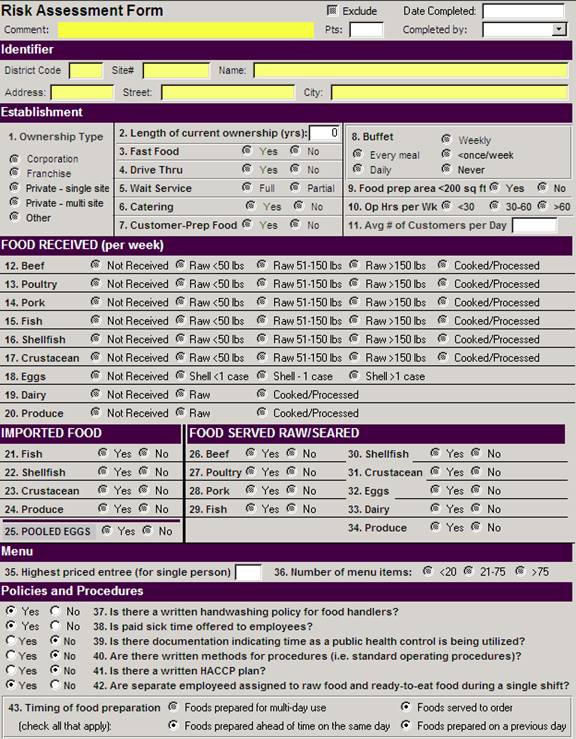EPITECHCONSULTING
Innovative research, applications, and consulting in epidemiology
|
|
Innovative research, applications, and consulting in epidemiology
|
|
|
Dissertation Summary Risk Assessment Model to Predict Foodborne Illness Outbreaks at Restaurants by Sato, Heidi D., Ph.D., Touro University, 2007 Abstract: This study examined the relationships between risk factors and foodborne disease outbreaks at restaurants. Factors examined were number of customers, foods served, prior violations, and the organizational culture of the restaurant. Two approaches were used for the research methodology: (1) a historical cohort design and (2) case control design. The historical cohort design was used to test relationships between violations and outbreaks. A case control design was used to test relationships between outbreaks and factors pertaining to the organizational culture, foods served, and number of customers. In the historical cohort study, 19,753 restaurants were reviewed for violations that occurred during routine inspections that preceded an outbreak (or proxy outbreak) in 2004. Relative rates of outbreaks were compared between exposure groups. In the case control study, a case was defined as a restaurant with a foodborne outbreak during 2004. A control was a restaurant without foodborne illness complaints between July 2000 and December 2005. In the case control study, five inspectors surveyed managers from 186 "case" restaurants and 277 "control" restaurants, randomly selected and stratified by number of seats and risk rating. Using multivariate analysis, foodborne outbreaks were significantly associated with buffets (OR=3.14, 95% CI=1.54-6.64), higher price entries (OR=1.64, 95% CI=1.29-1.83), larger number of customers (OR=1.24, 95% CI=1.14-1.36), larger number of seats (OR=2.32, 95% CI=2.05-2.63), and sanitizing violations (OR=1.98, 95% CI=1.03-3.50). Other factors associated with outbreaks included cooking/reheating violations, contamination violations, full wait service, off-site catering, food prepared for multi-day use, larger number of foodhandlers, large menu size, type of ownership, receiving imported fish or crustacean, receiving shell eggs, pooling eggs, and serving raw meats or produce. A structural equation model based on number of customers, foodhandling violations, and raw food served was developed for estimating the risk of foodborne outbreaks at restaurants. The results suggest that structural equation modeling is an effective tool for predicting foodborne outbreaks at restaurants. Utilizing a risk-based model would allow health departments to focus more inspections towards restaurants that pose the greatest risk to public health.
Access Complete Dissertation Complete dissertation can be accessed at: http://gradworks.umi.com/32/86/3286260.html Risk
Assessment Survey Form for Restaurants 
|
|
|